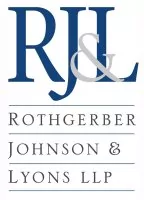In 1974, Colorado began to operate under a no-fault auto insurance system. Since that time, Colorado's auto insurance premiums have skyrocketed. Colorado's auto insurance rates moved from tenth lowest in the nation in 1972 to the eighth highest in 2003. During the last year, many auto no-fault premiums increased another 20 to 30% and Personal Injury Protection (PIP) costs have risen by as much as 60% since 2001. Governor Owens challenged the legislature to either fix the no-fault system or join the other 37 states that have a tort system. The Colorado legislature chose the tort system which went into effect on July 1, 2003. This article will explain the differences between these two systems and how this change will likely affect insurance premiums for both auto and health insurance.
Under Colorado's no-fault system, PIP coverage was mandatory and provided coverage for certain medical and rehabilitation expenses from injuries sustained in an automobile accident, regardless of who was at fault (hence, the term "no-fault"). There were no subrogation rights against the person at fault for the recovery of these benefits. No-fault also imposed threshold limits, i.e., $2,500 for medical expenses, that had to be satisfied prior to a lawsuit being filed.
Under a tort system, the insurance company of the person who is responsible for the accident foots the bills for injuries and damages. No longer is one entitled to receive medical and rehabilitation expenses regardless of fault. Subrogation by health insurers or other benefit providers against the party at fault is allowed and no threshold limits are imposed. To provide a substitute for PIP as it pertains to the payment of medical expenses, most insurance companies are offering "medical payment" coverage as an option. Medical payment coverage provides benefits to you and injured passengers in your vehicle, regardless of fault. Most insurance companies will offer medical payment coverage with limits between $5,000 and $25,000.
The greatest difference between the no-fault and tort systems lies in who is responsible for the payment of medical bills as a result of injuries sustained in an accident. For example, under the no-fault system, if you were in an accident and injured, you would seek medical treatment and your own auto insurance company would pay for that treatment. Under the tort system, you must look to other insurance to pay your medical expenses. Typically, one will look to their own health insurance company for payment of this medical expense.
Although the Colorado no-fault system expired on July 1, 2003, insurance companies who have issued policies that are effective beyond July 1, 2003, must honor those policies. The insurance company will be required to honor that policy and pay all benefits according to the old laws. Once the policy expires, insurance companies can no longer offer no-fault insurance. As such, all policies issued after July 1, 2003, will be written pursuant to the tort system.
PIP coverage was one of the most expensive portions of an auto insurance policy. With the elimination of PIP under the tort system, there should be a significant reduction in auto insurance premiums. Some insurance companies are predicting a 20 to 25% reduction in premium costs, which would be a savings of approximately $250 per year for the average policyholder.
However, the change from the no-fault system to the tort system will likely result in an increase in health insurance premiums. Health insurers will now be required to provide medical coverage to insureds for injuries caused by auto accidents where mandatory PIP coverage used to provide this coverage. Although health insurers are allowed to subrogate against the party at fault, there will inevitably be those accidents where liability is unclear, precluding subrogation. In addition, the attorneys' fees associated with pursuing a subrogation claim are not recoverable. The Colorado Division of Insurance has not provided any estimates of this likely increase.
On the flip side, health insurance companies will probably be better suited to control medical costs associated with auto accidents. Most HMO and PPO insurers have agreed upon rates for various treatments with their doctors. HMO and PPO insurers also typically exclude certain types of treatment, such as chiropractic, massage therapy, and acupuncture, that were allowed and frequently abused under the no-fault system. Without a threshold limitation, injured persons are no longer encouraged to seek medical treatment prior to the initiation of a lawsuit.
Finally, some health care insurance companies may eventually exclude coverage for injuries caused in auto accidents. The Colorado Division of Insurance reports that most, if not all, self-funded health insurance plans issued through labor unions are planning to exclude treatment for injuries sustained in auto accidents. If coverage is excluded by either a self-funded or health insurance plan, an appropriate amount of medical payment coverage should be purchased through the auto insurance company.
It will be interesting in a few years to look back to see whether the switch from no-fault to the tort system succeeded in lowering auto insurance premiums without substantially raising health insurance rates. This law firm intends to monitor insurance rates for both auto and health insurance, and will provide an update to this article in the future.
Troy Olsen is an associate practicing in RJ&L's Colorado Springs office where he focuses on litigation, including appellate work and bench and jury trials. He concentrates his practice in the areas of defense litigation, including commercial matters, contract disputes, real estate, premises liability, construction, as well as liability claims against professionals in the areas of real estate, law, and medicine. Mr. Olsen frequently advises clients regarding the drafting, interpretation, and enforcement of contracts; risk management; and providing insurance coverage analysis for businesses.
The content of this article is intended to provide a general guide to the subject matter. Specialist advice should be sought about your specific circumstances.

